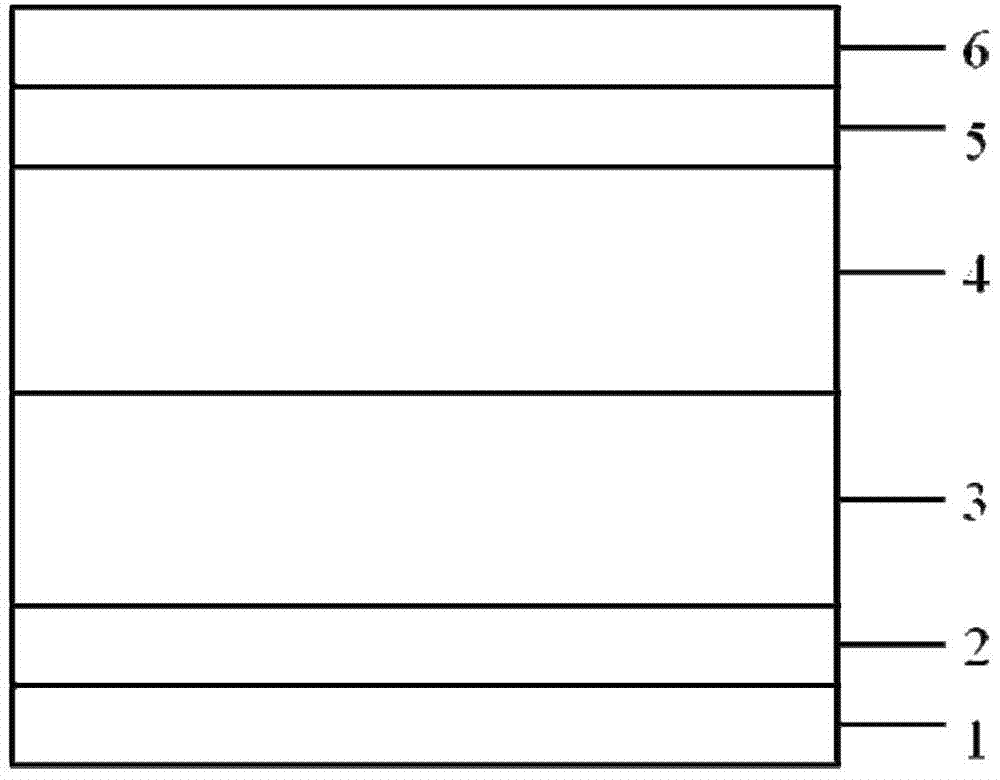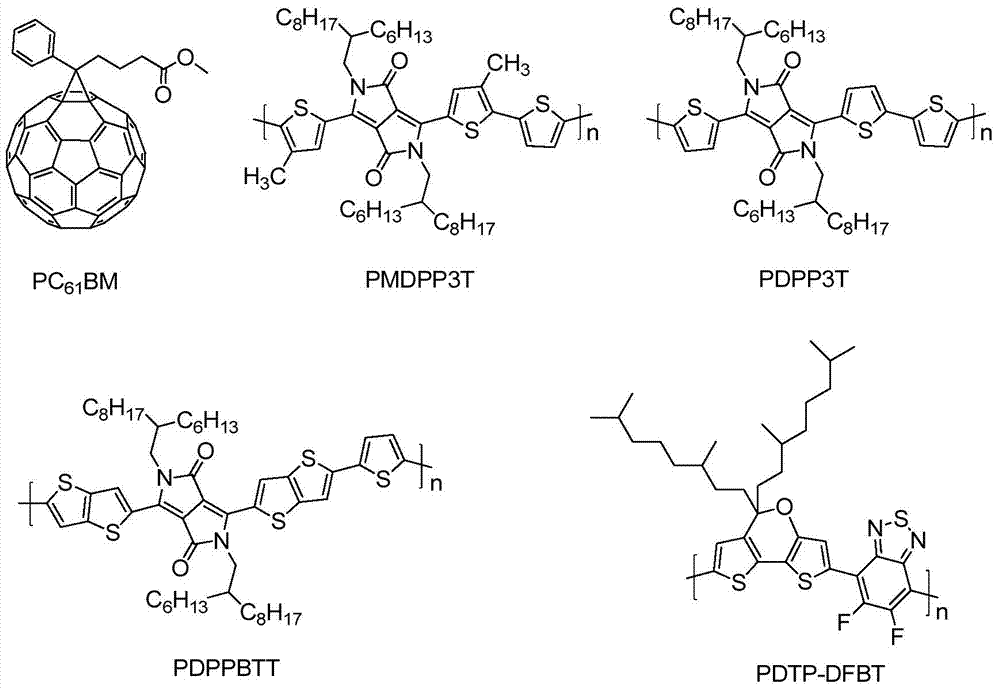An integrated solar cell based on a perovskite solar cell and a bulk heterojunction solar cell and its preparation method
A solar cell and bulk heterojunction technology, applied in the field of solar cells, can solve the problems of less absorption than perovskite materials, and achieve the effect of simple and easy method, improved short-circuit current and energy conversion efficiency, and good application prospects.
- Summary
- Abstract
- Description
- Claims
- Application Information
AI Technical Summary
Problems solved by technology
Method used
Image
Examples
Embodiment 1
[0052] First PEDOT:PSS (Clevios TM P VP AI 4083) was spin-coated on the surface of pretreated ITO glass at a speed of 4000rpm, and heated at 150°C in air for 10min to obtain a 30nm thick PEDOT:PSS film; CH with a molar ratio of 3:1 3 NH 3 I and PbCl 2 Mix and dissolve in DMF to obtain a solution with a concentration of 20wt%, spin-coat it on the PEDOT:PSS film at a speed of 3000rpm in a glove box, and heat at 80°C for 120min to obtain a 100nm CH 3 NH 3 PB 3-x Cl x film; combining PDPP3T and PC 61 BM was mixed and dissolved in chlorobenzene or other solvents at a mass ratio of 1:2 to obtain a solution with a total concentration of 8 mg / mL, which was spin-coated on CH at a speed of 1200 rpm. 3 NH 3 PB 3-x Cl x On the thin film, a 30nm organic blend layer is obtained; in high vacuum (-4 Pa), vapor-deposit 0.5nm fluoride and 70nm aluminum electrodes to complete the battery preparation. After testing, the battery efficiency is 11.5%.
Embodiment 2
[0054] First PEDOT:PSS (Clevios TM P VP AI 4083) was spin-coated on the surface of pretreated ITO glass at a speed of 4000rpm, and heated at 150°C in air for 10min to obtain a 30nm thick PEDOT:PSS film; CH with a molar ratio of 3:1 3 NH 3 I and PbCl 2 Mix and dissolve in DMF to obtain a solution with a concentration of 30wt%, spin-coat it on the PEDOT:PSS film at 3000rpm in a glove box, heat at 90°C for 90min, and obtain a 150nm CH 3 NH 3 PB 3-x Cl x film; PMDPP3T and PC 61 BM was mixed and dissolved in chlorobenzene or other solvents at a mass ratio of 1:1.5 to obtain a solution with a total concentration of 12 mg / mL, which was spin-coated on CH at a speed of 1200 rpm. 3 NH 3 PB 3-x Cl x On the thin film, a 50nm organic blend layer is obtained; in high vacuum (-4 Pa), vapor-deposit 0.8nm fluoride and 100nm aluminum electrodes to complete the battery preparation. After testing, the battery efficiency is 11.1%.
Embodiment 3
[0056] First PEDOT:PSS (Clevios TM P VP AI 4083) was spin-coated on the surface of pretreated ITO glass at a speed of 4000rpm, and heated at 150°C in air for 10min to obtain a 30nm thick PEDOT:PSS film; CH with a molar ratio of 3:1 3 NH 3 I and PbCl 2 Mix and dissolve in DMF to obtain a solution with a concentration of 50wt%, spin-coat it on the PEDOT:PSS film at 3000rpm in a glove box, heat at 100°C for 60min, and obtain a 400nm CH 3 NH 3 PB 3-x Cl x film; PMDPP3T and PC 71BM was mixed and dissolved in chlorobenzene or other solvents at a mass ratio of 1:4 to obtain a solution with a total concentration of 20 mg / mL, which was spin-coated on CH at a speed of 1200 rpm. 3 NH 3 PB 3-x Cl x On the thin film, a 120nm organic blend layer is obtained; in high vacuum (-4 Pa), evaporating 10nm calcium and 150nm aluminum electrodes to complete the battery preparation. After testing, the battery efficiency is 12.2%.
PUM
 Login to View More
Login to View More Abstract
Description
Claims
Application Information
 Login to View More
Login to View More - R&D
- Intellectual Property
- Life Sciences
- Materials
- Tech Scout
- Unparalleled Data Quality
- Higher Quality Content
- 60% Fewer Hallucinations
Browse by: Latest US Patents, China's latest patents, Technical Efficacy Thesaurus, Application Domain, Technology Topic, Popular Technical Reports.
© 2025 PatSnap. All rights reserved.Legal|Privacy policy|Modern Slavery Act Transparency Statement|Sitemap|About US| Contact US: help@patsnap.com


